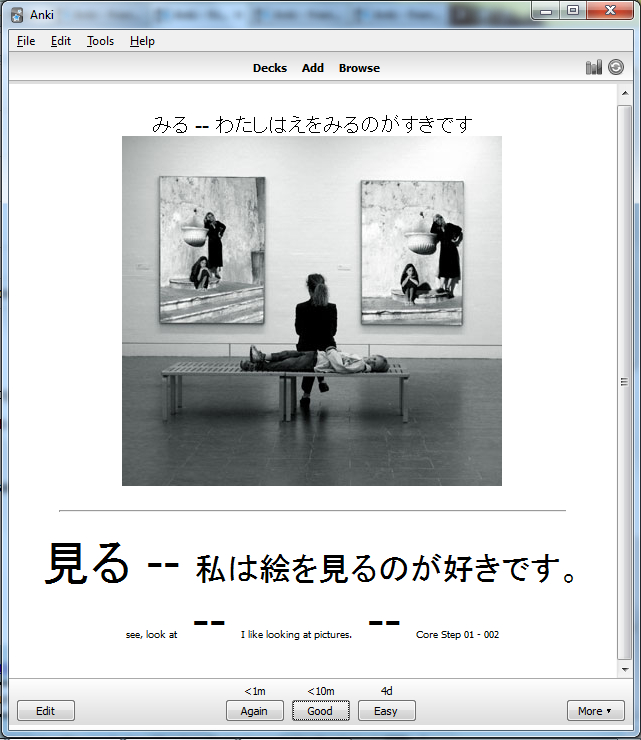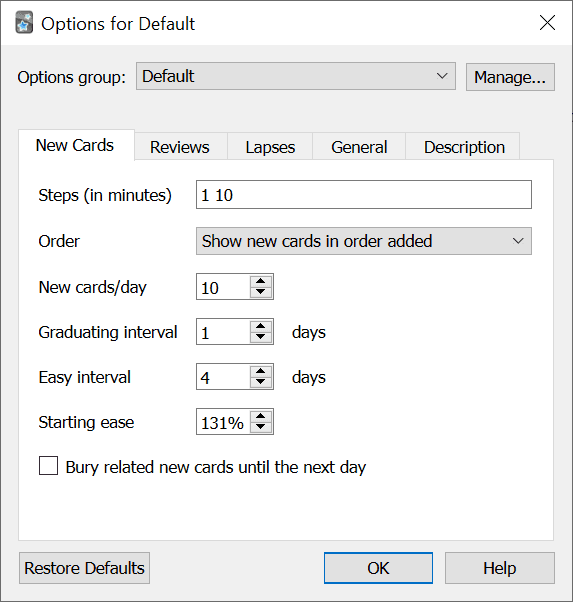

- #Anki settings brosencephalon full
- #Anki settings brosencephalon code
- #Anki settings brosencephalon free
Once you use these settings I’m going to give you, you’ll be able to avoid these two problems right away so you’ll have a smooth review experience every single time. Going back to the first problem, sometimes Anki would have you review an old card as if it were a new card the moment you lapse on that card. Some settings just don’t make sense at all.Newer cards don’t get reviewed as frequently, and older cards start back to zero when you’ve lapsed even partially. The default intervals (both for new and older cards) give a really poor review experience.That’s because in my experience, there are two problems to the default settings: Why? Because I want you to be able to think for yourself so you can adapt the settings to your own situation. That’s because I don’t only want you to have “ready-made” templates, but also a complete understanding of how the advice I’m giving you works. In this lesson, you’re going to learn my recommended Anki settings and how settings work in a more practical manner. When you create good flashcards + use these settings I’m going to show you, the answer is approximately 5 successful repetitions. How many repetitions do you think you need to be able to remember an idea for 3 months? I hope you like it! Let me know if you have any questions or feedback - I'd like to hear what you think! 🙂
#Anki settings brosencephalon free
Compared to how I was doing before I started using Zanki, I'm really pleased with how well it works.Hi, this is Lesson of 4 in the Anki Fundamentals free course. I exclusively use these decks, Sketchy, Pathoma, etc to study for the faculty written tests, and even though there is stuff on those tests I'm not as well prepared for (the ~10% not in Zanki), I consistently score one standard deviation above the mean. I think that engagement with the material is REALLY important. they covered a lot of the bone and endo in our renal block in relation to kidney failure, so I had to go to those decks to get that material).īottom line for me is I don't make new cards from lecture, but I do edit/addend existing cards.

Since use a systems based curriculum, it actually works out pretty nicely with the subdeck architecture of Zanki (though there is some crossover - e.g. I have found the decks I use (Zanki+BG addon+Pharm+lolMicro) covers 80-90% of what my school teaches.
#Anki settings brosencephalon code
For me, these settings feel like a cheat code for med school - stupid little factoids just kind of stick in my brain. In terms of lapses, I've not dealt with too many lapses. It ends up averaging 600-900 cards/day, depending on the new cards that I unsuspended. With this approach, I see myself spending 3-5 hours total on Anki everyday. Ends up being between 200-350 cards not related to what we are currently learning.įor the content we are currently learning in the curriculum, I typically see anywhere between 80-200 new cards a day (yes, those days that have 200 new cards are rough). I usually spend about an hour of reviews not related to the current curriculum content (we have a systems-based curriculum). I've matured 50% of Zanki and 90% of Lolnotacop's deck. I started Zanki halfway through MS1, and Lolnotacop's deck at the end of MS1.

I am very committed to getting reviews done everyday. When we are presented with new material in lecture (or I watch pathoma/sketchy), I un-suspend those related cards. Max reviews/day: 9000 (which I understand to be the max)Įverything starts suspended. Per day: 9000, which I understand as the max (I un-suspend based on what happens in lecture that day/after I watch a Sketchy or Pathoma video) YelloW General Surgery ABSITE Review Deck
#Anki settings brosencephalon full
For a full list please see all decks here.ĭubin + Rhythm Strips + Hoop!'s Radiology


 0 kommentar(er)
0 kommentar(er)
